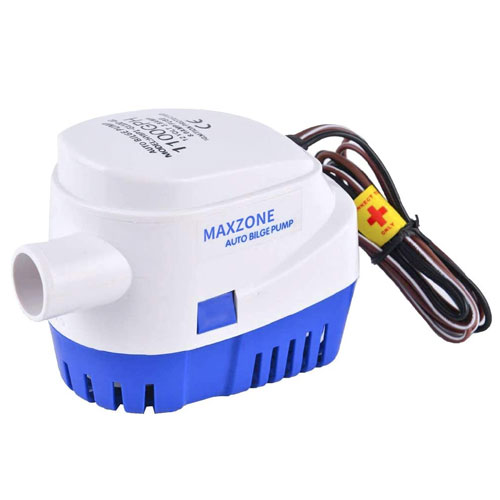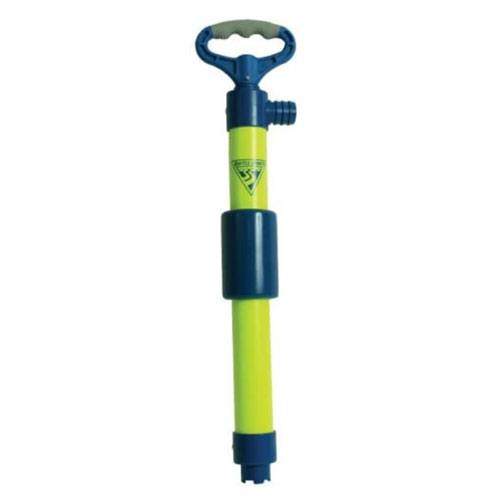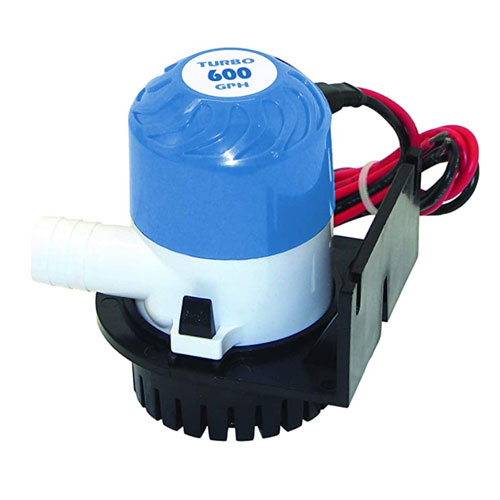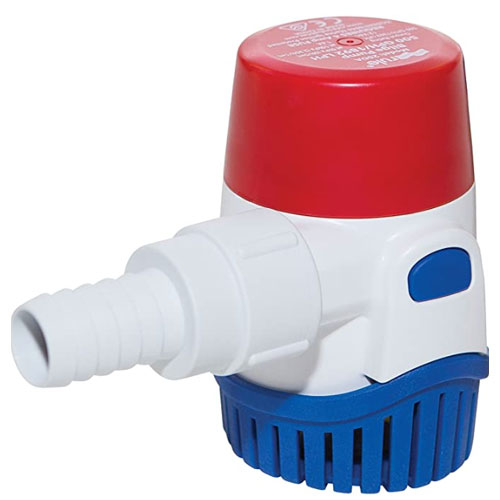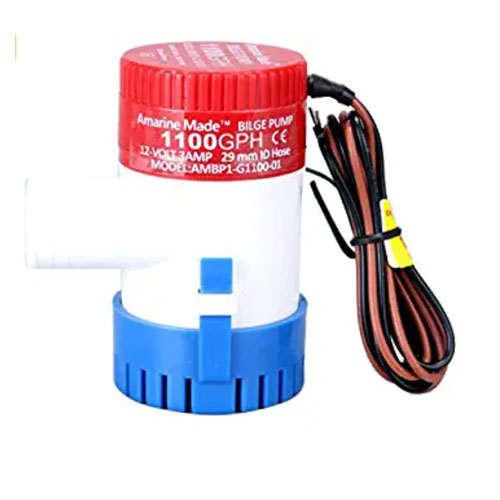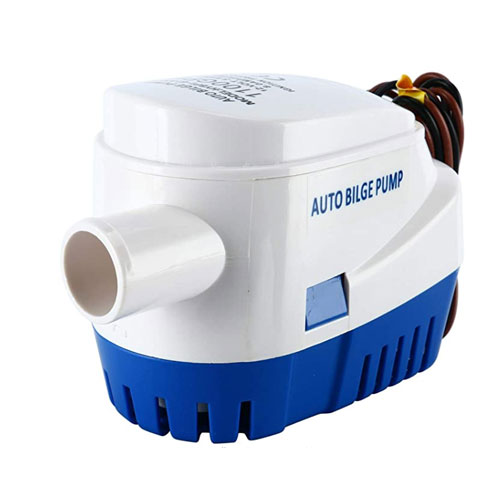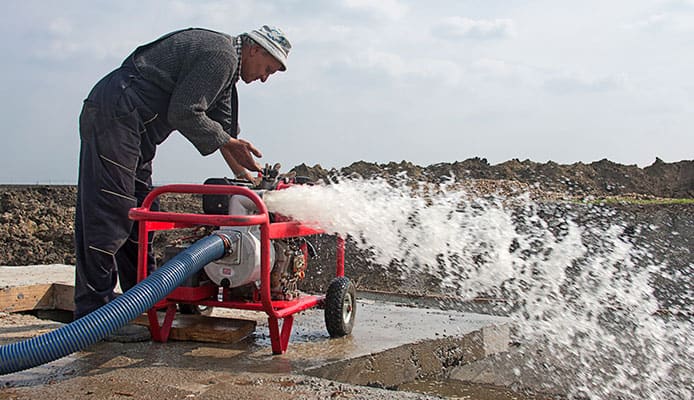
-
1.
-
2.
-
3.
-
4.
-
5.
A bilge pump can be the secret hero of every boat, quietly pumping out the water that everyone forgets about. Sometimes they do it automatically or sometimes you might have to do get involved and do it manually. Either way, getting a bilge pump can literally be a lifesaver.
Getting the best bilge pump on the market for your boat can be hard work as there are many different types and options available. There are also other criteria to be considered such as the size of your boat and the amount of water to be accumulated.
Thankfully, we’ve looked through the bilge pump reviews to bring you a list of the top rated automatic bilge pump together with a buying guide so that you can make an informed decision on finding the best automatic bilge pump when the time comes.
OUR TOP PICK
MAXZONE Submersible Boat Bilge Pump
- What Makes This Bilge Pump Stand Out
- Includes a built-in float switch
- Uses built-in electronic controlled reed sensor system for fully automatic operation
- Consumes power only when the internal float switch activates the pump
- Offers silent and vibrationless operation
- Comes with a compact design with resistance against rust and corrosion
- Protect against airlocks and high currents
Product Dimensions: 3.7 x 4.69 x 6.42 inches
Item Weight: 1.21 Pounds
EDITORS CHOICE
Seattle Sports Paddlers Bilge Pump
- What Makes This Bilge Pump Stand Out
- Comes with an easy-grip, rubber over-molded handle
- Uses high visibility neon yellow stock for safety
- Includes a collar to keep pump afloat in water
- Based on a manual pull-push operation
- Capable of accepting a hose to route water away
- Available in different sized packs for purchase
Product Dimensions: 21 x 1.75 x 1 inches
Item Weight: 12 Ounces
BEST VALUE
Shoreline Marine Bilge Pump
- What Makes This Bilge Pump Stand Out
- Clips securely to mounting base for easy installation
- Comes with a universal mounting base with bottom or side mounting ability
- Operable in fully submersible condition with a pumping capacity of 600 GPH
- Includes stainless steel hardware
- Includes an internal float switch for automatic operation
- Offers usage with standard ¾” I.D. bilge hose
Product Dimensions: 8.2 x 5.7 x 3.4 inches
Item Weight: 9.6 Ounces
SeaSense Hand Bilge Pump

- What Makes This Bilge Pump Stand Out
- Comes with an anti-leak design
- Weighs less for easy usage
- Includes removable hose for easy storage
- Clear its passages of air for pumping
- Provides resistance against corrosion
- Reaches small or compact areas with ease
Product Dimensions: 3.5 x 4.5 x 20.75 inches
Item Weight: 1.6 Pounds
- What Makes This Bilge Pump Stand Out
- Based on a non-automatic design
- Allows usage with a panel switch or rule float switch
- Uses a highly efficient and low amp motor
- Operable in submersible conditions
- Protects against ignition and includes a stainless-steel shaft
- Comes with a backflow preventer
Product Dimensions: 7 x 6.9 x 4 inches
Item Weight: 14.4 Ounces
Attwood Sahara Automatic Boat Bilge Pump
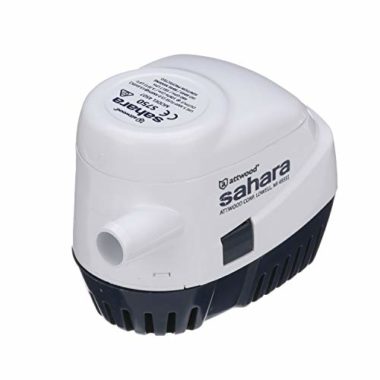
- What Makes This Bilge Pump Stand Out
- Comes as a compact all in one unit for larger recreational boats
- Draws only 1.5 amps for 750 GPH performance at an open flow
- Uses caulked wire to prevent water from wicking
- Ensures a powerful and durable performance with steel-reinforced sealing
- Includes permanent-magnet motor and stainless-steel shaft
- Includes a 36-inch length of 16-gauge tinned copper wire
Product Dimensions: 7.4 x 7.8 x 8.1 inches
Item Weight: 1.1 Pounds
- What Makes This Bilge Pump Stand Out
- Comes in a small size with high efficiency.
- Supports low current power supply
- Provides a unique automatic discharge function for continuous operation
- Includes heavy-duty motors with stainless steel shafts and tough thermoplastic body
- It comes with an anti-airlock design and moisture tight seals
- Offers a Snap-lock strainer base for easy installation
Product Dimensions: 4.7 x 3.9 x 3.5 inches
Item Weight: 14.1 Ounces
- What Makes This Bilge Pump Stand Out
- Includes a built-in float switch with the TEST button at the rear of the unit
- Based on the anti-airlock design and moisture tight seals
- Uses built-in an electronic controlled reed sensor system for fully automatic operation
- Consumes power on when the pump is activated with a rise in water level
- Offers protection against high current
- It can be used with a switch panel for manual override
Product Dimensions: 0.8 x 0.8 x 0.8 inches
Item Weight: 1.2 Pounds
Seaflo Boat Marine Plumbing Electric Bilge Pump
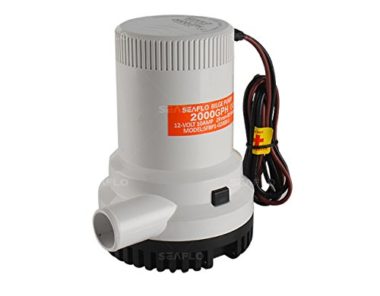
- What Makes This Bilge Pump Stand Out
- Comprises heavy-duty motors with stainless steel shafts and tough thermoplastic bodies
- Operable in complete submerged conditions
- Complies with all existing safety standards
- Comes with snap-lock strainer bases for easy cleaning
- Uses marine grade blocked wiring
- Offers anti-airlock protection
Product Dimensions: 6.4 x 5.2 x 4.5 inches
Item Weight: 2.7 Pounds
Yescom Electric Marine Submersible Bilge Pump
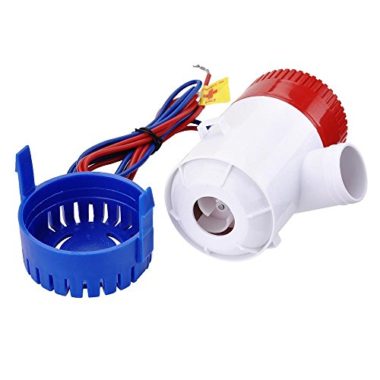
- What Makes This Bilge Pump Stand Out
- Comes in small size with high efficiency
- Consumes low current for operations
- Includes a universal mounting hole for quick installation
- Uses durable plastic housing
- Offers resistance to rust
- Includes an easily accessible strainer base for maintenance
Product Dimensions: 4.3 x 3.2 x 2.4 inches
Item Weight: 13.6 Ounces
How To Choose The Best Bilge Pump – Buying Guide
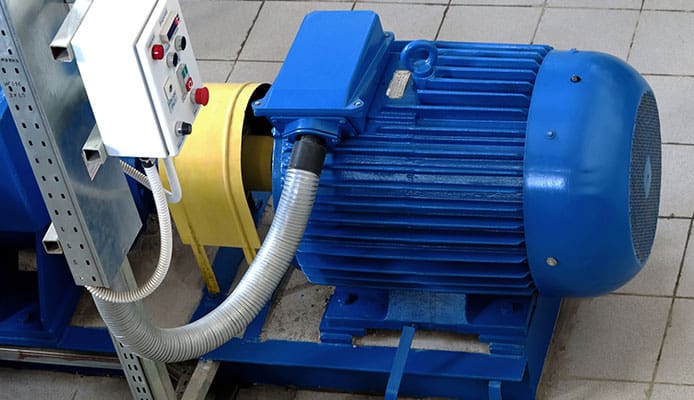
Considering the fact that you will be using your bilge pump for boat almost every day, you need a quality one that you can count on and made to last. The best bilge pumps have important criteria taken into consideration during manufacture and you should look for exactly the same.
Boat Type
If you’re in a small boat that has an outboard motor then it’s unlikely that you’ll need an electric bilge pump as any water collected could easily be taken out via a hand pump. For slightly large boats, such as ski boats, then that’s where you’ll likely want to invest in an electric pump which is able to be submerged in water as it’s likely that these types of boats could take on a lot more water than others. There are other considerations too, such as offshore racing sailboats which are required by the ISAF to house two bilge pumps with one that will be operated on the cockpit and another that will be operated below the deck.
When you get to boats such as a coastal or offshore boat, that’s where you will need to have a lot more capability to clear excess water and the best thing in these situations is probably to have one bilge pump for each department that could fill with water. If you’re on a powerboat that you only ever use on calm waters then it’s unlikely that you’d need to amount of bilge pump capacity of a smaller boat that will be on much rougher waters.
Boat Size
As a general rule, the bigger the boat, the larger the requirement for a bilge pump but, consideration also needs to be made to the type of boat that you have and where you’ll be traveling.
When you go to buy an electric bilge pump, you should see a figure on there of GPH which stands for gallons per hour. This is the rate of water that the pump will clear in an hour under perfect conditions. These figures can vary by quite a lot, and if you have a larger boat then look for a pump that has a larger GPH number.
There is a possibility that you have a small boat that sits very high in the water or a large boat that sits lower in the water. The amount of freeboard that you have is an important factor because if you have a low hull volume then the issue of bilge water could become a big problem a lot more quickly than if you had a large amount of freeboard where you could get rid of bilge water more consistently.
Sometimes if you have a smaller boat, then it might be the best idea to get a powerful pump anyway just so that you can clear that dangerous bilge water as soon as you possibly can.
Manual vs. Electric Power
When it comes to manual vs electric then there really is no contest in terms of which is better. An electric pump will be able to clear a lot more water in a much shorter time. If you’re looking for a bilge pump for something like a kayak, then a manual pump is all you’ll need to look for. In order to use an electronic pump, then you’ll obviously need to have an electricity supply so any boats without this would have to go down the manual option.
If that water goes beyond the bilge then it could affect your electrical system and therefore your electronic bilge would fail. For this season, it’s always a good reason to carry an automatic bilge pump so you can clear that water even if you’re having trouble with your electronic bilge.
Related Reviews: Electric Pump For Sup & Kayak Bilge Pump
Bilge Compartments
If you have segmented bilges then it could mean that you can get water trapped in different sections of your boat so just having one pump in once section could be pointless. One solution would be to have a diaphragm pump that would have numerous intake hoses that would be relocated to different parts of the boat. Another option though would be to have an electronic pump linked up to each separate bilge section which will ensure that the water is constantly cleared out of every bilge.
Pump Switches
When it comes to switches, there are three main types that will turn on your pump automatically. The first one is called an integral automatic switch, which sits inside the pump, and acts as a switch once it comes into contact with the water. There is an alternative system where the pump will spin intermittently to see if there is the presence of any water.
If you don’t have a float switch, then there is an option to add one with a separate float switch which will add on to your current device and transform it into an automatic electric pump. These switches used to contain mercury, but thankfully they are now more environmentally friendly and will switch on as soon as it senses water.
There are other switches with the ability to sense the presence of water through its plastic housing. These are more intelligent switches which will only turn on when there is water and not any other substance. Whatever switch you have, being able to have your pump turn on automatically can be a great feature.
Centrifugal vs. Diaphragm Pumps
Centrifugal pumps are the ones that will sit in the water and work once they are surrounded by it. These pumps are non-self-priming which means they work by drawing water into the pump through their vanes and then pushing it outwards. They have a built-in strainer that can easily be cleaned to stop it from getting clogged up with debris.
There is another type of pump available though and that is a diaphragm pump. This is a self-priming pump that can lifter the water up through an intake hose and then expel it from the outside. They need a strainer at the end of the intake hose to prevent the pump from clogging up. If you’re on a boat you don’t really want to worry about having to pump out your water too much. The centrifugal pump is much more popular as it can just sit in the bilge and get to work once it is required to do so.
Access & Installation
It’s important to install the bilge pump in an easy to access part of your boat so that you are able to clean the strainer and check on its maintenance every so often. You do also want it to be at the part of the boat where there will be the most water. Installation of a bilge pump is relatively easy but it does require a small amount of electrical know-how as you need to attach this to your battery and potentially a switch as well. This can be done either by a trained professional or it can quite easily be self-taught. Having a manual pump obviously negates the need for any wiring but does take away from the high level of water clearance you get with an electric pump and also means that there will be extra effort involved.
Capacity
Pumps can differ a lot on just how much water they can pump out at any one time. This though is a figure that is measured and you will see this on all electronic pumps. A gallon per hour (GPH) is the figure that you will see and it’s a measure of how much water can be pumped out per hour during perfect circumstances. If you’re looking for a bilge pump for your boat, then you want to be looking for a pump that has a GPH of around 1000 at the least, unless you have a small boat. If you have a bigger bilge compartment or a bigger boat then you may want to increase that figure or increase the number of bilge pumps that you have.
Material
The casing that the pump will come in will generally be made from ABS plastic which is renowned as a very durable and resistant material that will keep the water at bay. You want the device to protect the ignition and also protect the wires that are coming from it. You want to look for plenty of corrosion protection and the best shafts are made from stainless steel. Materials are possibly the most underrated part of a bilge pump but due to the conditions they’ll be working in, make sure to check your pump is well-made.
FAQs
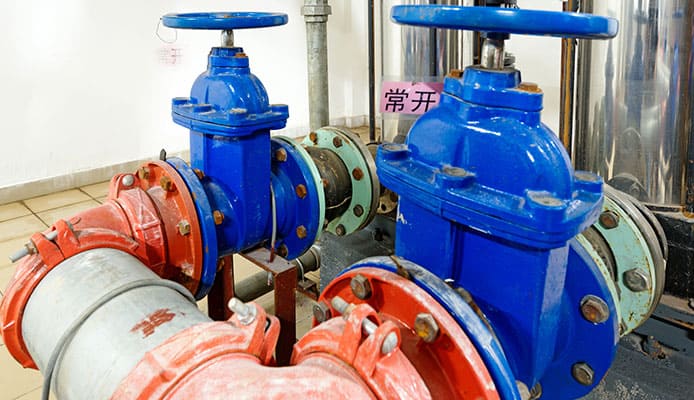
Q: How A Bilge Pump Can Fail?
A bilge pump, like any pump, can fail in a number of ways. There can be flow restrictions, which means something is restricting the pump, which can either cause it to overwork or stop. There is also the problem of siphoning too as there can be a problem if water comes back into the pump. This can happen if the hose is below the waterline as it will constantly bring water back into the pump so that it never stops working. It’s always important that any hose is well clear of the waterline.
Another area in which they can fail is being clogged up with dirt and debris over time. It’s very hard for any pump to defend against everything that might be in the water, so if they are not maintained then they could stop working.
Electronic pumps also contain wiring in a boat which is always prone to failure. Salt, fuel, and other irritants can be a nightmare for wiring and if this fails then your pump will fail. Also, if your boat takes on too much water and your electric system fails then your bilge pump also won’t be able to work any longer.
Q: What Size Wire Do You Need?
The sizing of the wire that you need will depend on the capacity of the pump that you are using, if it is 800 GPH or below, then you need to be looking for a wire gauge of 16. Between this figure and 2000 GPH then you will require a wire gauge of 14, this is naturally the capacity that the vast majority of electronic bilge pumps have so it’s more than likely that you’ll need 14 gauge wire.
If you’re going for anything bigger than that then for anything from 2000 to 3500 GPH you’ll need 12 gauge wire and for anything above that you’ll need 10. This is vital to ensure the correct working of your bilge pump.
Q: What Are Bilge Pump System Components?
You’ll need to connect the pump to the boat battery via the wire connectors in order to give it life. This is also the point where you would attach the bilge pump to a switch, however, if you have an automatic pump then this might not be required as the pump will automatically switch on when it encounters water.
This will allow your pump to get going, but it will have no way to remove the water, so with centrifugal pumps, you will need a discharge hose that will take the water out of the boat. With a diaphragm hose, you will also need an intake hose that will be able to take in the water. The final thing you need for your bilge system is a way for the water to get out, so a fitting above the waterline is required so you can clear the bilge.
Q: How Does A Bilge Pump Work?
Different pumps work in different ways, with the electronic pumps they work by spinning a motor that will draw in the water around it, for it then to be pushed out into the hose to be removed. Manual pumps work through air pressure to suck the water in before pushing it out. Simply though, a pump is there to take water from one place and put it in another. A bilge pump is so-called because it takes water from the bilge and out it into whatever body of water that you’re floating on.
Q: Do I Need More Than One?
In torrential rain or rough seas you will either want a pump with a large capacity or numerous bilge pumps that can all work together to clear the water. If you’re on a larger boat, then it’s sensible to look into have more than just one bilge pump. A common solution is to have a smaller capacity bilge pump right at the bottom of the boat to clear the accumulation of water and a larger one sitting slightly higher in case of emergencies.
If you are on a smaller boat and want a backup bilge pump then it’s also an idea to have a manual one which you can use if your electronic one fails. Aside from this, of course, there is also the matter of whether your boat has multiple bilge compartments. If it does, then there needs to be a solution for each one and the easiest way to do this would be to have a centrifugal bilge pump for each.
Q: Are They Submersible?
These pumps by definition are able to be submerged as that’s how they work. They rely on water in order to be in full operation. These pumps though can sit in dirty water and function time and time again. The wiring and the ignition should be protected and a good installation will ensure that your bilge pump will last for a long time.
Q: If My Boat Doesn’t Have A Motor Do I Still Need One?
It doesn’t matter if you’re in a little kayak or a mega cruise ship, every vessel that floats will get some accumulating of water at the bottom of it, which needs to be removed. If you’re on a boat that doesn’t have a motor and/or a battery then it’d still be a good idea to get a manual bilge pump so you are able to clean out any water that comes in. This will ensure that you have something which can help you to get rid of that troublesome bilge water.
Q: How Do I Clean A Bilge Pump?
The motor will sit on top of a plastic casing which will the screwed into the boat, removing the motor is easy as you are able to unclip it and remove it. Once you have the motor, then all you need to do is rinse it in water and this will remove all the excess material that is sitting on there. Once clean, then you can place it back into the plastic casing knowing that your bilge will be able to work at full power.
Q: Are Bilge Pumps Noisy?
There are plenty of pumps out there which market themselves as silent and ones that don’t cause any vibration so you won’t even notice these while they are in operation. Even the bilge pumps that don’t offer this aren’t too loud, so noise is never a problem when it comes to bilge pumps.
Globo Surf Overview
Bilge pumps are the secret hero of the boating world as they are there to protect you from water that you otherwise might forget about. Picking the right solution for you isn’t simple, as there can be many aspects to consider such as the type of your boat, the type of water that you’re going to be on, and also the size of the boat as well.
That’s why we have developed this buying guide to explain all these choices, so if you need a refresher, just read back through the buying guide before you make a decision.
More Boat Reviews:
- VHF Antenna
- Boat Grill
- Underwater Boat Lights
- Boat Fenders
- Gifts For Boaters
- Marine Amplifier
- Boat Seats
- Marine Subwoofer
- Boat Carpet
- Anchor Rope
More Pumps Reviews:
- Pool Pump
- Air Pump For Inflatables
- Pool Heat Pump
- Spa Pump



